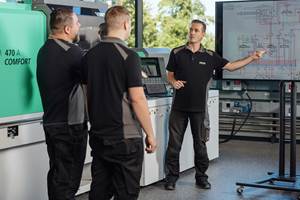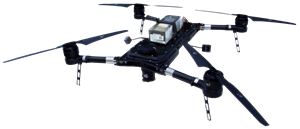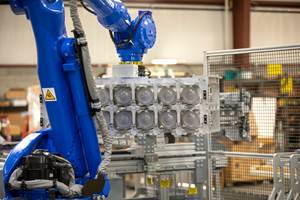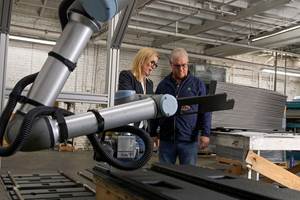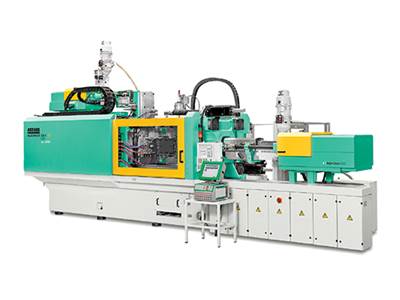News in Robots from K 2013
Close Up: Robots
Injection molding Cartesian robots are being made lighter and faster, but with greater payload capacity and vibration resistance. Six-axis articulated robots are being made easier to program.
Injection molding Cartesian robots are being made lighter and faster, but with greater payload capacity and vibration resistance. Six-axis articulated robots are being made easier to program. Those themes summarize many of the new robot developments at the Dusseldorf show. For a complete picture of the news, see also our injection molding show preview in September.
NEW CARTESIAN ROBOTS
Boy Machines (U.S. office in Exton, Pa.) showed three new developments in robotics: a servo picker; an all-servo four-axis robot (up to six axes available) integrated with the molding machine controller; and a tiny four-axis, pneumatic side-entry robot that was demolding liquid silicone rubber (LSR) parts on a 10-metric-ton press.
As previewed in September, Engel (U.S. office in York, Pa.) showed its largest model yet, the Viper 120, and a new C70 teach pad.
Also noted in our preview, KraussMaffei (U.S. office in Florence, Ky.) showed off its new MC6 control pendant with several new software modules for robot programming.
Sepro of France (U.S. office in Pittsburgh) brought around two-dozen robots to the show. Among them was an example of the new Multi-Inject line designed for multi-component molding applications where the vertical, secondary injection unit would interfere with the movement of a standard beam robot. This gantry-style servo robot comes in two sizes for presses up to 500 tons. Unlike standard Cartesian robots, it is mounted on the moving rather than fixed platen. They y-axis kick or demolding arm is a sliding frame with the z-axis vertical arm at the very end, so it can reach into the mold without touching the vertical injector above the fixed platen. This configuration allows untrestricted vertical access to the mold and is less costly, more flexible, and easier to use than side-entry robots. Muli-Inject robots are also said to avoid interference with rack-and-pinion unscrewing closure molds.
Also new from Sepro is the 5DA line of dual-arm servo robots for use with three-plate molds. Three models handle machines from 30 to 500 tons. They include a three-axis main arm with a 0-90° pneumatic wrist and a two-axis servo arm for sprue removal. Servo drive enables simultaneous motion of both arms.
As reported in September, Star Automation (U.S. office in Menomonee Falls, Wis.) showed two new small SWA “swing-axis” models, the SWA-150S servo sprue picker and SWA-3K-R5 robot. Also new were the Fx-1000 high-speed series (available in two-arm models) for presses of 100 to 350 tons, and the Lx-1000T all-servo robot, which can release parts on either side of the press.
New Cartesian S Series all-servo robots from Sytrama, a sister company to Negri Bossi (U.S. office in New Castle, Del.) has 50% fewer parts and a more rigid vertical arm to resist vibrations; and it handles higher payloads at higher speeds—all at the same price as the older G Series. It covers press sizes from 150 to 7000 tons.
Sytrama’s new low-cost, all-aluminum One Series for small machines (50-250 tons) comes in two sizes; both are all-servo and come with air and vacuum circuits for a little over $20,000 complete.
The new W833 pro from Wittmann Battenfeld (U.S. office in Torrington, Conn.) is the first model in the W8 pro series. This complete redesign includes a new drive for the Z axis, fewer cables, 30% stiffer vertical arm, quieter operation, more compact control cabinet, and ability to use 60% less mold-opening stroke when a B servo axis is used. Next in line for an upgrade to the new series are the W832 and W843 models.
Also new at the show was a four-camera quality-checking system for Wittmann’s W837 high-speed IML system. Demolded parts were separately presented to the cameras, and two photos were digitally combined into an image of the complete label, which was checked for defects, especially at the seams where label edges meet.
Wittmann Battenfeld also showed its W842 IML Economy system, designed for lower cost rather than highest speed in low-volume applications.
Yushin of Japan (U.S. office in Cranson, R.I.) brought out its new HST line of servo robots to replace its RA II high-speed series. Using carbon-fiber construction, the new models are 25% lighter and 9% faster, while handling the same payload capacity. Dual-arm versions for stack molds are a new addition, and there are 13 more stroke configurations available.With the help of anti-vibration controls, settling time for oscillations to calm down has been cut by up to 99%. HST robots are offered with either the high-end E-touch II controller or more economical E-touch compact control.
JOINTED-ARM ROBOTS
Arburg (U.S. office in Newington, Conn.) demonstrated a new system using a six-axis robot suspended from a traversing beam. This arrangement is said to provide a greater working area and faster mold entry (43% faster than an upright six-axis robot). The small Agilus robot from Kuka Robotics (U.S. office in Shelby Township, Mich.) has 10-kg payload capacity.
Coming this year, and previewed at K, is Sepro’s 6X Visual 3D simulation software to ease programming of six-axis articulated robots. It will offer touchscreen programming on one half of the screen while the other half simulates the motions of the automation cell. View of the cell can be rotated by the user.
Staubli International (U.S. office in Duncan, S.C.) had two new six-axis products at the show. One was a larger model, the TX340SH (shelf-mounted) with 3.5-meter reach and payload capacity of 165 kg. The other was the RX170 hsm robot for automated machining of reinforced composites. The sixth axis of this model is replaced with a milling spindle, and its long reach allows trimming parts several meters long.
NEW COMPONENTS
A large handful of EOAT components was introduced by ASS Maschinenbau (U.S. office in Livonia, Mich.). These include mini grippers with inductive sensor for part presence and gripping force of 2 lb; spring-loaded mini stroke unit with sensor; plastic stroke reducers; bi-directional, variable-angle stroke unit; long-angle clamp for vacuum cups with ±90º adjustable swivel; robot hand plate combined with a pneumatic stroke unit; and a channel nut that allows inserting a new element without taking the end cap off the profile.
FIPA GmbH (U.S. office in Cary, N.C.) showed off robot vacuum cups made of new Varioflex urethane material. They have a two-layer construction with a firm body and soft-sealing lip, which is said to provide optimal sealing for strong holding force. They are also abrasion, oil, and ozone resistant for long life.
A variety of new end-effector products were shown by SAS Automation (U.S. office in Xenia, Ohio). SAS is now offering custom-made EOAT parts made by laser sintering or 3D printing. Also new are “hybrid” HX end effectors for large, bulky parts handled by articulated-arm robots. The hybrid design combines the adjustability of tubular frames with the rigidity of extruded channel profiles. The HX design is said to allow better routing of air hoses and electrical sensor wires to grippers and suction cups.
In the smaller size range, SAS showed off various additions to its Blue Line series. These include the GRZ 10-10 D sprue cutter, said to be the smallest on the market; and the GRZ 20-22 G-STC Gripper Plier, a smaller version of the GRZ 20-22 model.
Related Content
Five Ways to Increase Productivity for Injection Molders
Faster setups, automation tools and proper training and support can go a long way.
Read MoreDrones and Injection Molding Ready for Takeoff
Drones and unmanned aerial vehicles (UAV) are approaching an inflection point where their production volumes — and functionality — will increasingly point to injection molding.
Read MoreAn Automation 'First' for Non-Servo-Eject Trim Presses
Compact, flexible and configurable robotic system is said to be the first to enable thermoformers to fully automate product handling after a non-servo trim press.
Read MoreCobot Creates 'Cell Manufacturing Dream' for Thermoformer
Kal Plastics deploys Universal Robot trimming cobot for a fraction of the cost and lead time of a CNC machine, cuts trimming time nearly in half and reduces late shipments to under 1% — all while improving employee safety and growth opportunities.
Read MoreRead Next
K 2013 Preview: Injection Molding
Next month’s mammoth triennial plastics show in Düsseldorf, Germany, challenges injection molding machine builders to demonstrate technological leadership in addressing the needs of the marketplace.
Read MoreHow Polymer Melts in Single-Screw Extruders
Understanding how polymer melts in a single-screw extruder could help you optimize your screw design to eliminate defect-causing solid polymer fragments.
Read MoreUnderstanding Melting in Single-Screw Extruders
You can better visualize the melting process by “flipping” the observation point so that the barrel appears to be turning clockwise around a stationary screw.
Read More


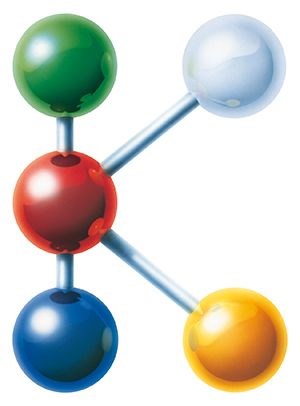
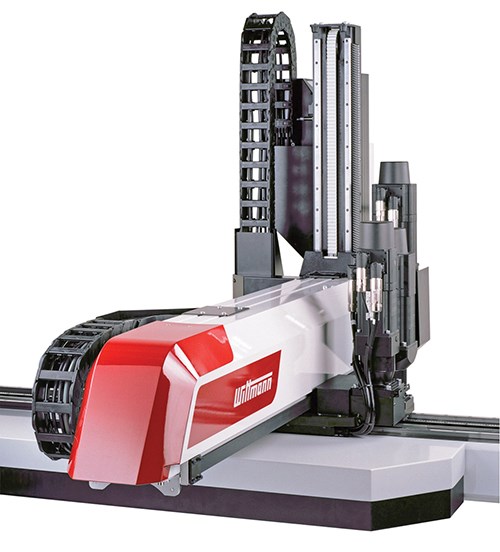
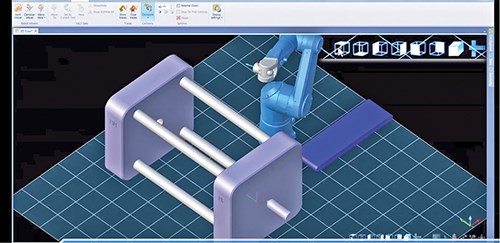
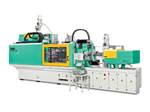















 (2).jpg;maxWidth=300;quality=90)





